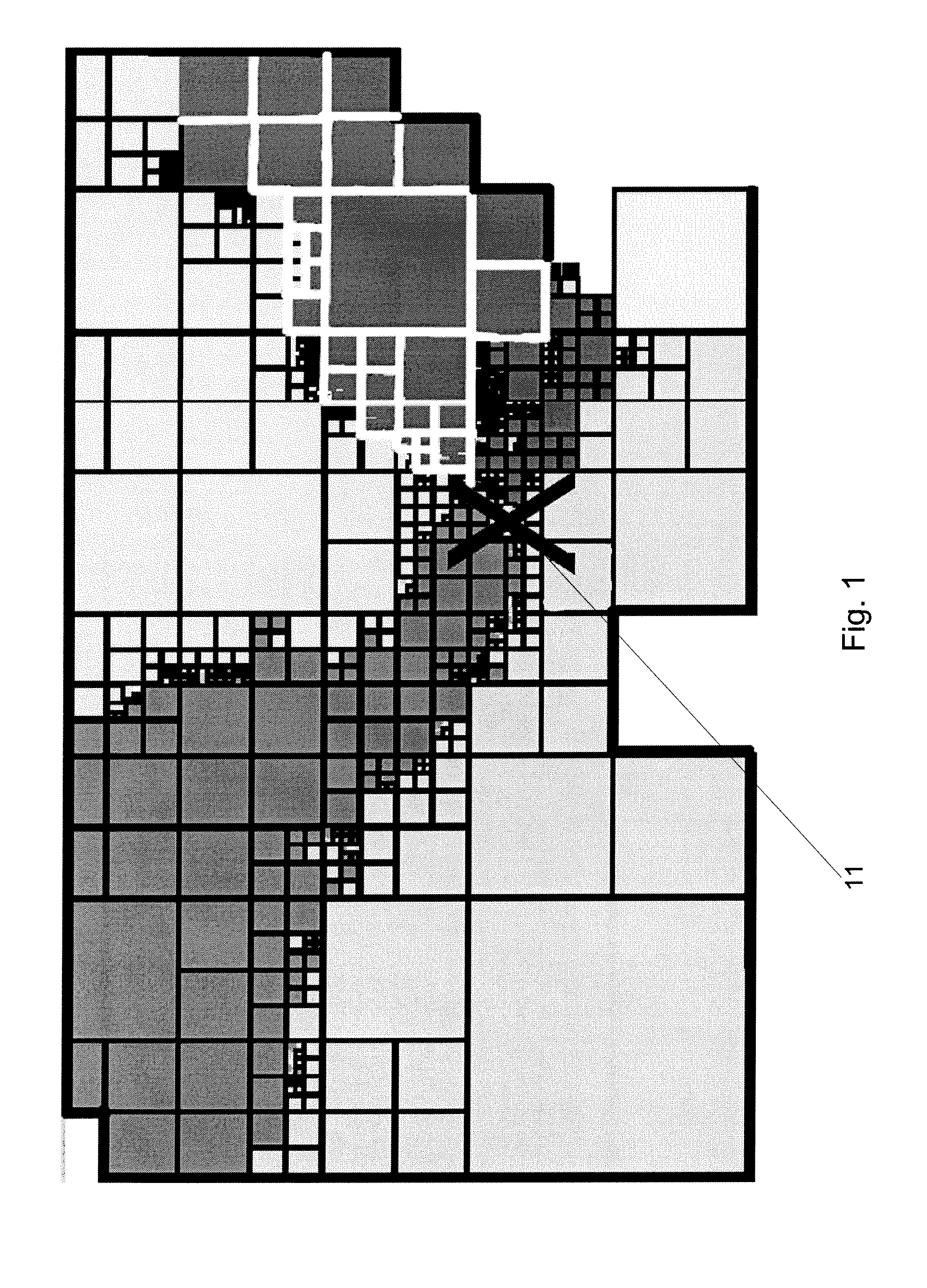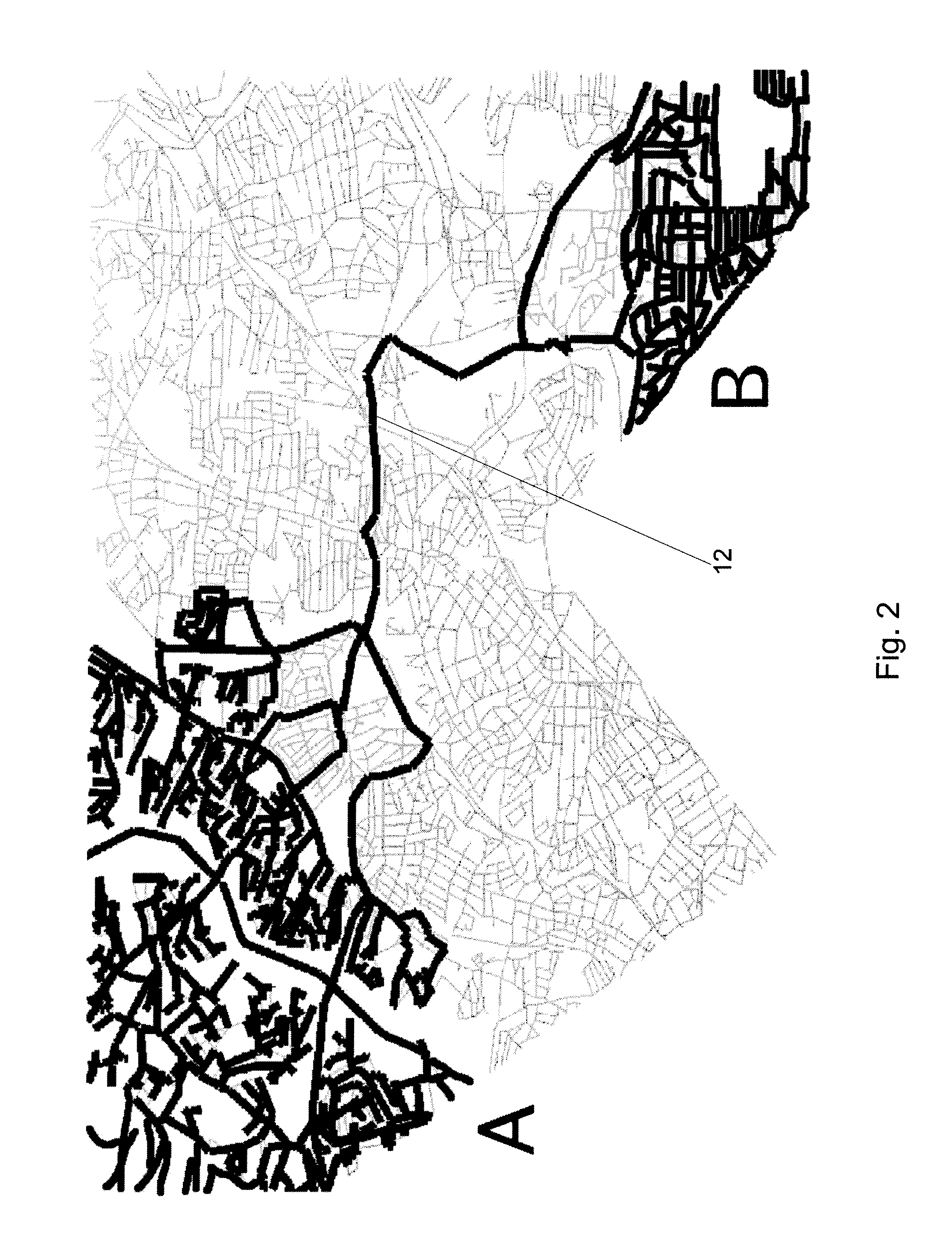Path oracles for spatial networks
a technology of spatial networks and paths, applied in the field of path oracles, can solve problems such as insufficient time to compute exact answers and possible changes
- Summary
- Abstract
- Description
- Claims
- Application Information
AI Technical Summary
Problems solved by technology
Method used
Image
Examples
Embodiment Construction
[0019]Spatial networks may refer to general graphs whose vertices and edges are augmented with spatial information. S denotes a d-dimensional embedding space (i.e., a reference coordinate system), which is two-dimensional for road networks. A spatial network can be abstracted to form an equivalent graph representation G=(V,E), where V is the set of vertices, E is the set of edges, n=|V|, and m=|E|. Given edge e∈E, w(e)≧0 denotes the distance along e. In addition, for every v∈V, p(v) denotes the spatial position of v with respect to S.
[0020]A path π of length k is a sequence of vertices (π1, . . . , πk+1) such that (πi, πi+1)∈E for 1≦I≦k, where π1 is referred to as the source vertex of π and πk+1 is referred to as the destination vertex of π. π(u, v) denotes a path (not necessarily the shortest path) with u as its source vertex and v as its destination vertex. The sequence of edges that make up the path π is denoted by the sequence φ(π), where φi(π)=(πI, πi+1). Furthermore, the weigh...
PUM
 Login to View More
Login to View More Abstract
Description
Claims
Application Information
 Login to View More
Login to View More - R&D
- Intellectual Property
- Life Sciences
- Materials
- Tech Scout
- Unparalleled Data Quality
- Higher Quality Content
- 60% Fewer Hallucinations
Browse by: Latest US Patents, China's latest patents, Technical Efficacy Thesaurus, Application Domain, Technology Topic, Popular Technical Reports.
© 2025 PatSnap. All rights reserved.Legal|Privacy policy|Modern Slavery Act Transparency Statement|Sitemap|About US| Contact US: help@patsnap.com



